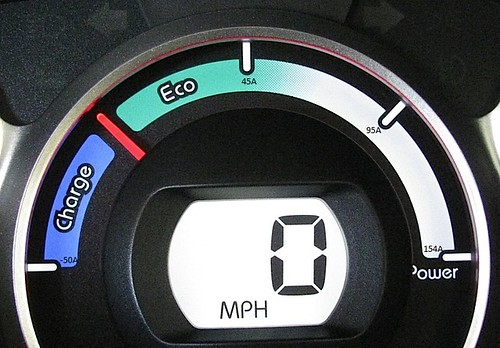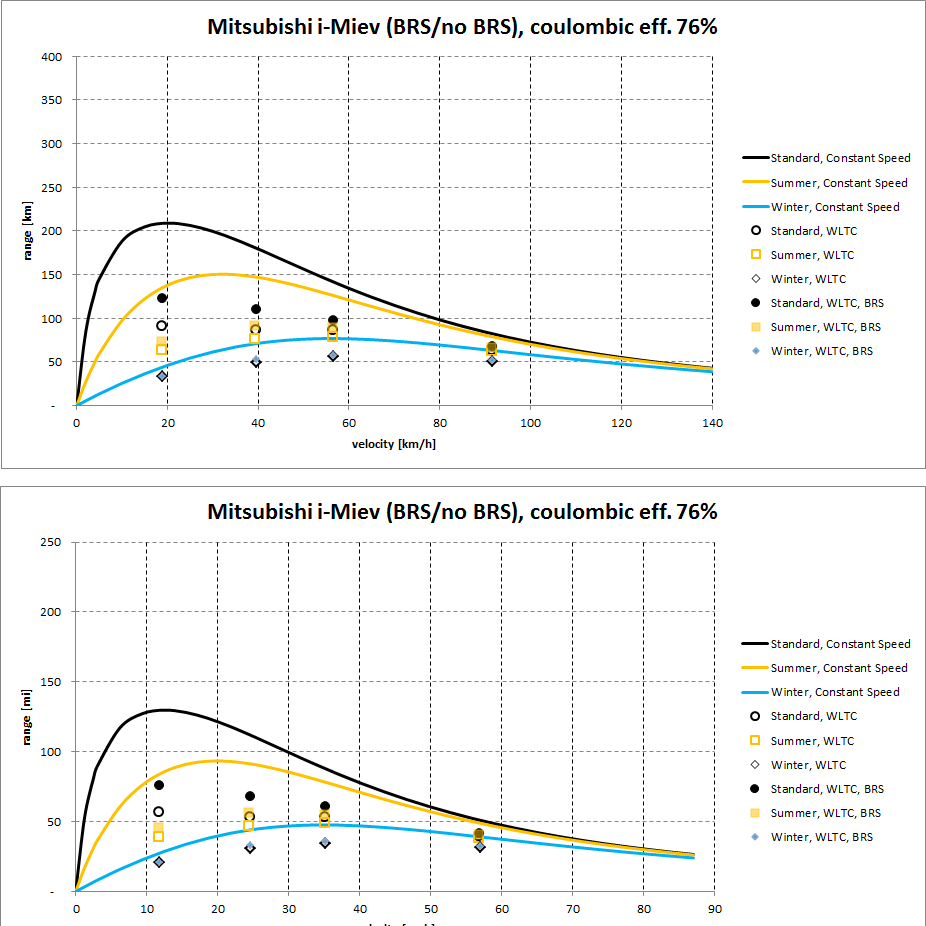Aerowhatt, delighted you reopened this thread, as it has been on my backburner as a topic to pursue further.
As you may recall from a couple of my early threads, I am strong proponent of coasting in neutral - in fact, I used to brag that maybe a quarter of my i-MiEV driving is in N and that I'd probably be the first to wear out our shift lever.
My N experience is a carryover from my Gen1 Honda Insight hypermiling days, whereby kicking the car into neutral and shutting off the fuel injectors to stop the engine was just one of the tricks up my sleeve which gave me a lifetime 77mpg on that car.
Now, enter the i-MiEV: almost all of the conventional hypermiling tricks are directly transferrable from the ICE vehicle to the BEV. There is, however, one terrific advantage that the BEV has over the ICE:
regeneration, which can result in actually having the fuel gauge go UP on a downhill run. Putting the car into Neutral and coasting the same distance will get us to the bottom of the hill faster, but what about our State of Charge?
Sorry, but starting from the top of the hill with, say, 8 bars and coasting down the hill in Neutral and arriving at the bottom with 8 bars gives less total trip range than arriving at the bottom of the hill with, for example, 10 bars achieved by regeneration.
As an aside and to satisfy my curiosity I just took a drive to verify what the quiescent power draw is. Coasting in Neutral, my CaniOn showed:
50% SoC
343V
1.3A (it first showed 1.5A, but settled down on 1.3A
Aircon/heater OFF
Nav radio ON
Fan on LOWEST setting
The 1.3A quiescent power draw was independent of vehicle speed.
We do have one more factor to take into account: altitude.
On a steep downhill we can regen to limit the speed to anything we wish. One of the ideas behind regenning to keep the speed down is to capture the energy that would otherwise be lost to aerodynamic drag. At sea level, this is significant; however, at 10,000ft altitude the numbers change noticeably and I'd have to go look up the air density and drag to see what the numbers are. In any case, regenning at a higher speed at altitude would probably give us the same net effect as doing it at a lower speed at sea level.
So, in conclusion, I contend that going downhill slower being slowed by regeneration will result in a better range than coasting down the hill in Neutral with the speed simply limited by aerodynamic drag.
Aerowhatt, I just re-read what you wrote and I think we may be in violent agreement as we are both proponents of coasting in Neutral, but we may be talking about apples vs. oranges.
Aerowhatt said:
I-40 on the way back really illustrates the difference though. Coming out of Tijeras Canyon into the city is a long steady grade. In N the Imiev will coast at 60 to 70 mph on this grade depending on the winds. Do the same section in D at the same speed and Canion is showing a 12 to 18 amp continuous power consumption. With the inverter on (in D) it has to create a rotating field to match the motor speed. Even though there is virtually no torque being produced. In N the inverter is off, so only accessory power consumption. Changing from N to D at high speed is seamless. The unit has a nice entry ramp and it feels like a light brake application.
You are referring to a situation that is a shallow downhill, and I completely agree that kicking the car into neutral in this situation is preferable to leaving it in D
if you want to maintain the same speed. I spend a lot of my driving doing just that while maintaining a high speed, with no one around me realizing that I'm coasting.
What I was referring to was a conscious sacrifice in vehicle speed in order to
further maximize range. Once again, arriving at the bottom of the hill with a higher State of Charge (more bars on the fuel gauge than at the top of the hill) is, by definition, extending the driving range of the car.


























